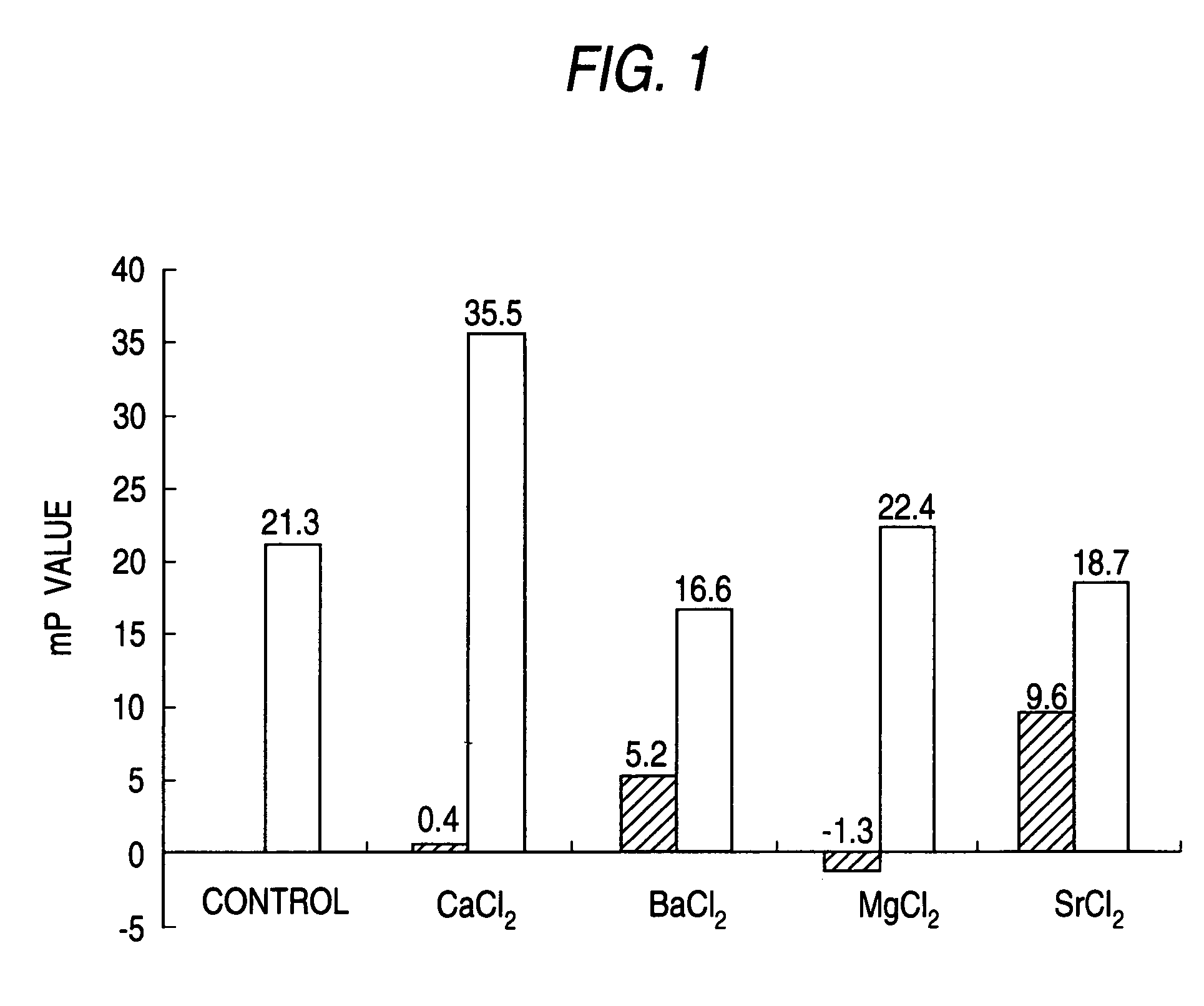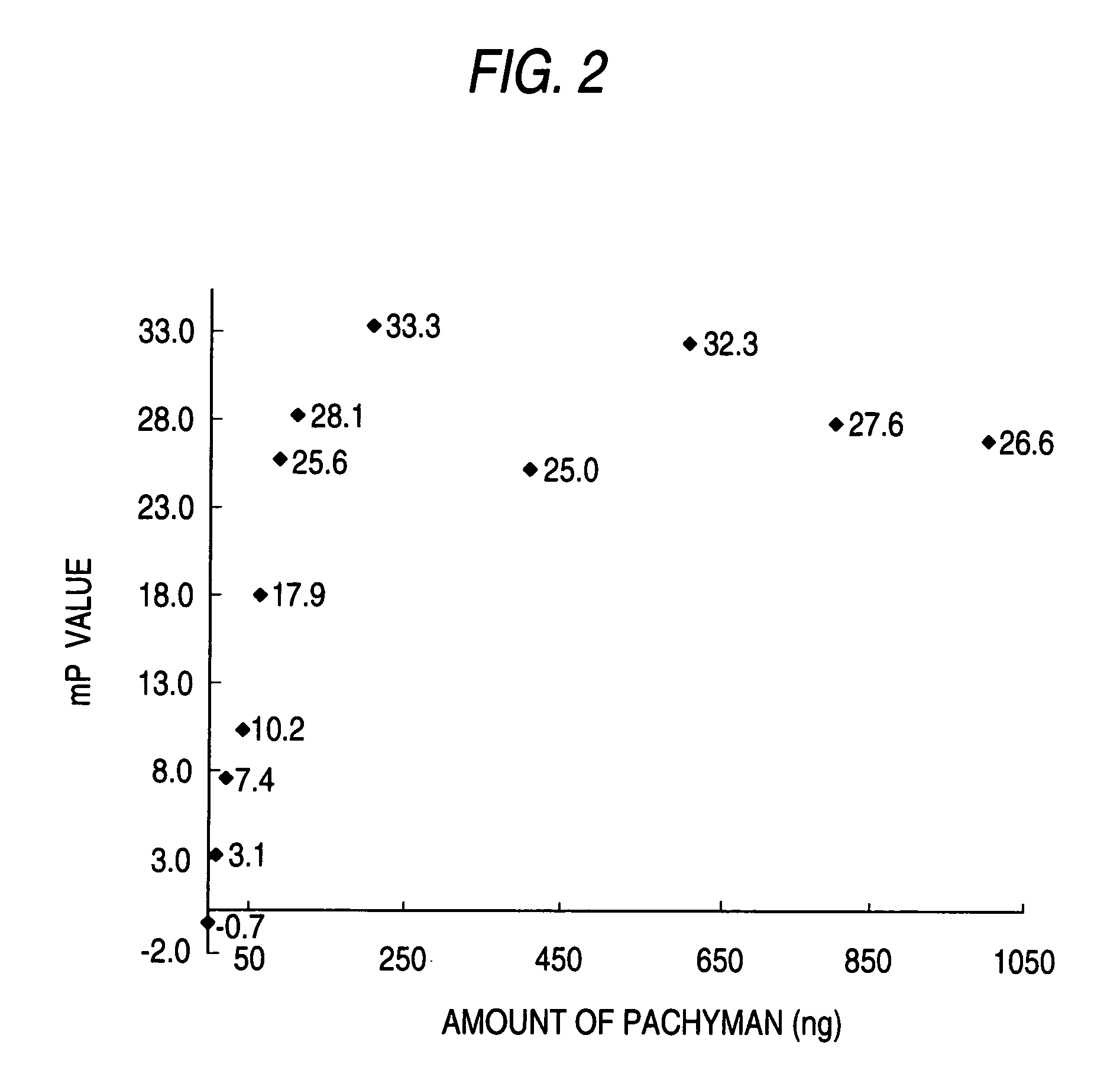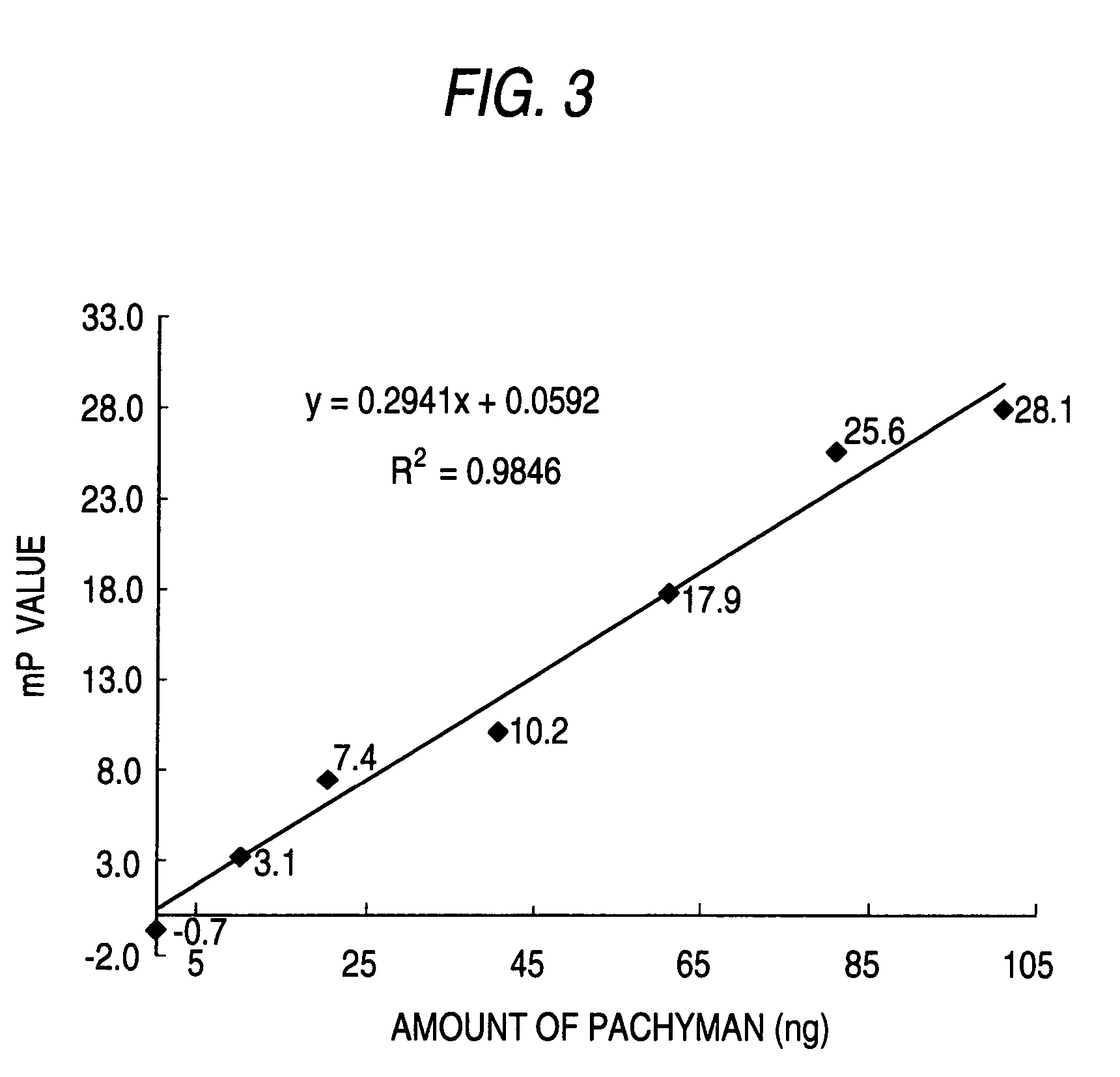(1->3)-beta-D-glucan binding domain protein, measuring method using the substance and assay kit
a technology of beta-d-glucan and binding domain, which is applied in the field of fluorescence-labeled (13)dglucan binding domain proteins, can solve the problem of inconvenient method
- Summary
- Abstract
- Description
- Claims
- Application Information
AI Technical Summary
Benefits of technology
Problems solved by technology
Method used
Image
Examples
examples
1. Preparation of (1→3)-β-D-glucan Binding Domain Protein
(1) Preparation of DNA Encoding (1→3)-β-D-glucan Binding Domain Protein
[0073]A total RNA was extracted from Tachypleus tridentatus amoebocyte, and a cDNA library was prepared from poly(A)+ RNA in accordance with a conventional method. The plasmid used was λgt11, and details were based on the cDNA Cloning System λgt11 of AmershamBioscience. In accordance with the method established by Muta et al. (J. Biol. Chem., 268: 1370-1374 (1994)), the factor G and respective subunits (α and β) were purified and the complete amino acid sequence was determined using 477 A Protein Sequencer (manufactured by Applied Biosystems). Oligonucleotide primers were synthesized based on the sequence, and each DNA was amplified 35 cycles by PCR using AmpliTaq (manufactured by PerkinElmer). After labeled with [α-32P]dCTP, the objective DNA sequence was confirmed by plaque hybridization using a detection probe prepared from the cDNA library. Using the th...
PUM
| Property | Measurement | Unit |
|---|---|---|
| molecular weight | aaaaa | aaaaa |
| molecular weight | aaaaa | aaaaa |
| molecular weight | aaaaa | aaaaa |
Abstract
Description
Claims
Application Information
 Login to View More
Login to View More - R&D
- Intellectual Property
- Life Sciences
- Materials
- Tech Scout
- Unparalleled Data Quality
- Higher Quality Content
- 60% Fewer Hallucinations
Browse by: Latest US Patents, China's latest patents, Technical Efficacy Thesaurus, Application Domain, Technology Topic, Popular Technical Reports.
© 2025 PatSnap. All rights reserved.Legal|Privacy policy|Modern Slavery Act Transparency Statement|Sitemap|About US| Contact US: help@patsnap.com



